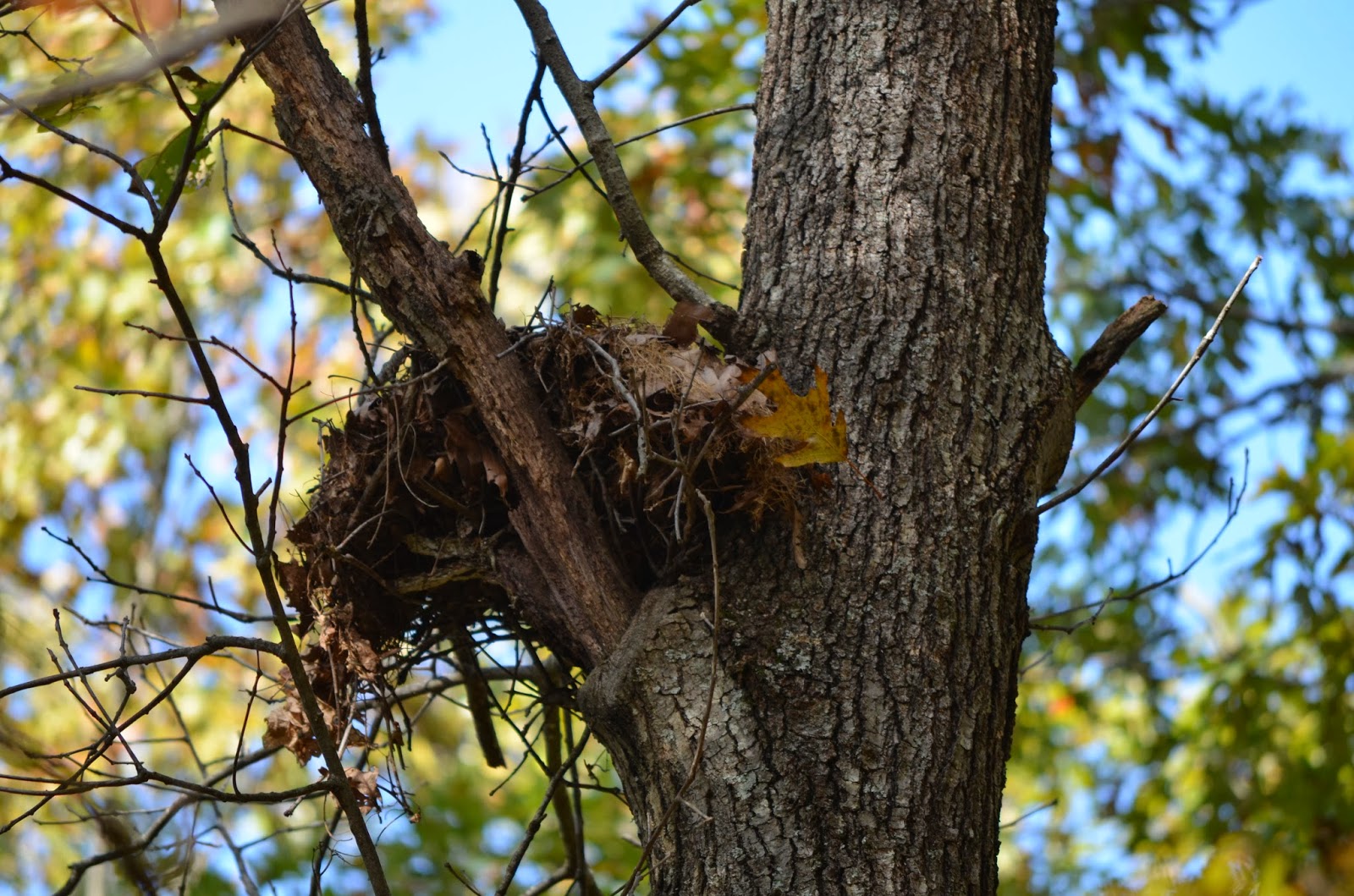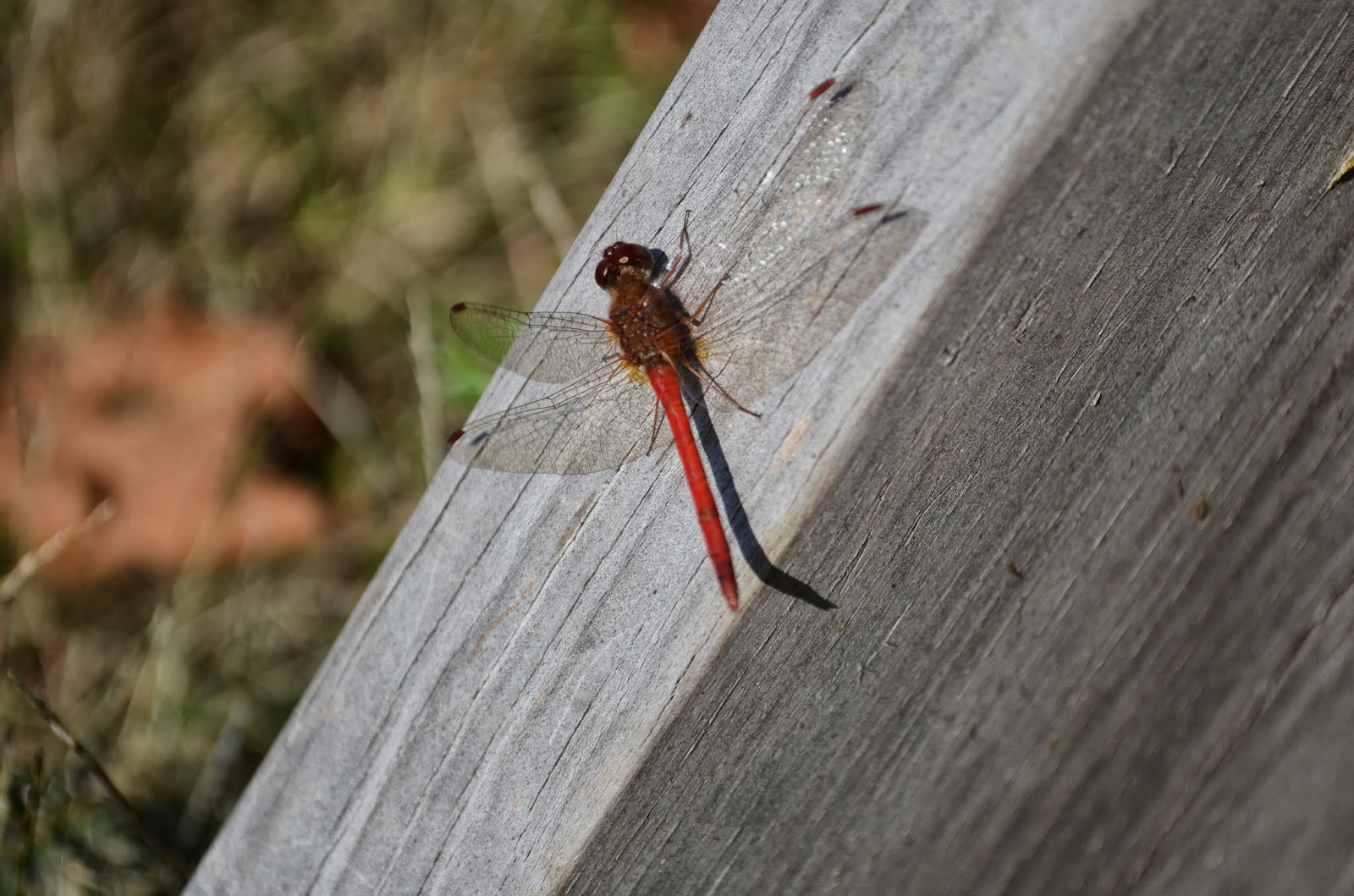Ecosystem Interactions
The assignment, head outdoors with your camera to take photographs that capture examples of interactions in nature. This assignment led me to our outdoor classroom and then once again to Bray Conservation area.First on my list is an example of mutualism. Mutualism is where both species benefit from the interaction. I was not sure what I would find on this cool fall day but I ran across our resident groundhog just outside our outdoor classroom fence. I managed to get a picture of it (sadly, not a great one) before it scurried away into the brush.
Not far from where I saw the groundhog is a persimmon tree with ripe fruit on it.
I have watched the groundhog sit under the persimmon tree before and then sit up on its hind legs and eat the fruit. I decided that this would be a good example of mutualism as the groundhog gets the benefit of the yummy fruit and then it spreads seeds to other places to start new trees growing.
My next example is of parasitism. Parasitism is when one organism benefits and the other is harmed. I had recently taken a picture of Virginia Creeper at Bray so I did some research and discovered that it is considered a parasite and if left alone it will eventually kill it's host tree or shrub.
This time of year the Virginia Creeper is a lovely shade of red. I think this photograph shows how it climbs up the trees very well since it's color contrasts with the surrounding foliage. Virginia Creeper climbs up trees by grabbing on with tendrils. The tendrils are like little arms that grab the surface. They also have little adhesive like pads that help them to attach themselves.
Commensalism is a relationship between two organisms where one benefits and the other is neither harmed or helped.
I think that when an animal uses a tree as a shelter/home that the animal benefits but the tree is not harmed, so this would be an example of commensalism.
My next example is of Predation. This is where one organism eats another. While I was wandering at Bray Conservation Area I scared up a blue heron. The primary food of a blue heron is small fish, but it will also eat aquatic insects, and other small amphibians, reptiles, mammals, and even small birds. Blue herons locate their food by sight and often will swallow their food whole.
My final interaction are decomposers. Decomposers play such an important role in nature. They help break down dead organisms and return nutrients to the soil. Without decomposers dead matter and waste would build up and the soil would not be able to support plant growth.
I hope you have enjoyed your journey with me as I looked for examples of interactions in nature. Check back again soon.
Thank you for visiting Sandy's Samplings.
Photographs were taken on October 26, 2013. Most were taken at Bray Conservation Area. The photograph of the groundhog and persimmons were taken in Truman's outdoor classroom. It was a lovely fall day with sunny skies and temperatures in the mid 60's. They were shot with a Nikon D5100 using a 55-200mm lens.



















